It´s better to get off quickly
24th July – 28th August 2020
K2
Art University Linz
Domgasse 1
Art University Linz
Domgasse 1

Dressing table with red fake marble front, 2020
two-part, 120 x 51 x 125 cm (wood rubber construction)
50 x 17 x 45 cm (fake marble front)
wood, rubber, chromed metal, cement,
eisenoxid pigment, fiberglass
two-part, 120 x 51 x 125 cm (wood rubber construction)
50 x 17 x 45 cm (fake marble front)
wood, rubber, chromed metal, cement,
eisenoxid pigment, fiberglass
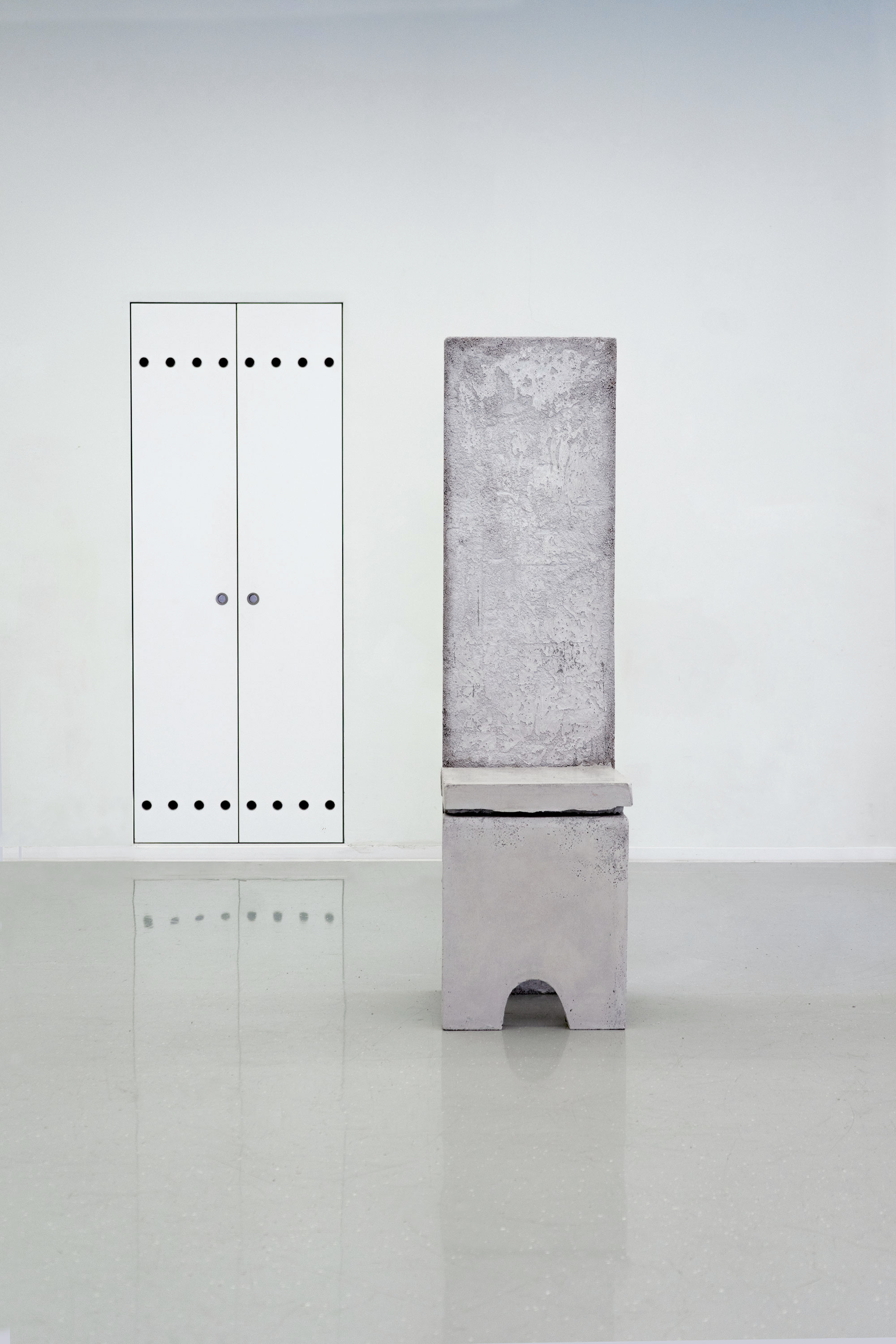
Single chair with high backrest, 2020
175 x 55 x 65 cm
concrete, titanoxid-pigments

Standby, 2020
75 x 33 x 32 cm
speed e-strich concrete, rubber, titanoxid pigment
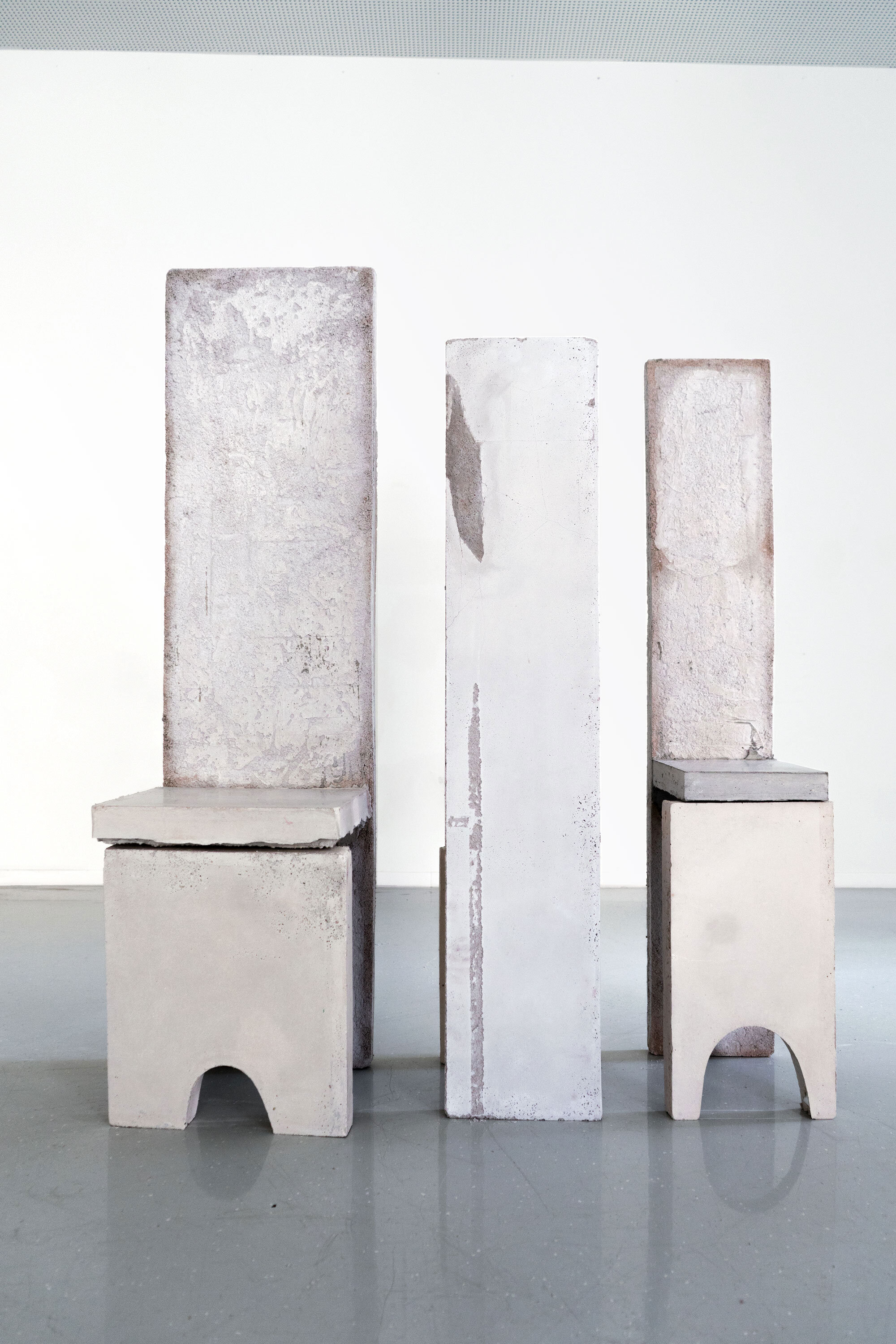
Chair-like building with high backrest, 2020
3 pieces, various sizes (max height 170 cm)
concrete, polystyrene hard foam, titanoxid pigment

Mousehole, 2020
in various sizes
concrete, polystyrene hard foam, titanoxid pigment
in various sizes
concrete, polystyrene hard foam, titanoxid pigment

Tower, 2020
140 x 50 x 40 cm
concrete, titanoxid pigment

Fake marble display, 2020
single plate detail, close-up
cement, chromoxid pigment, fibreglass
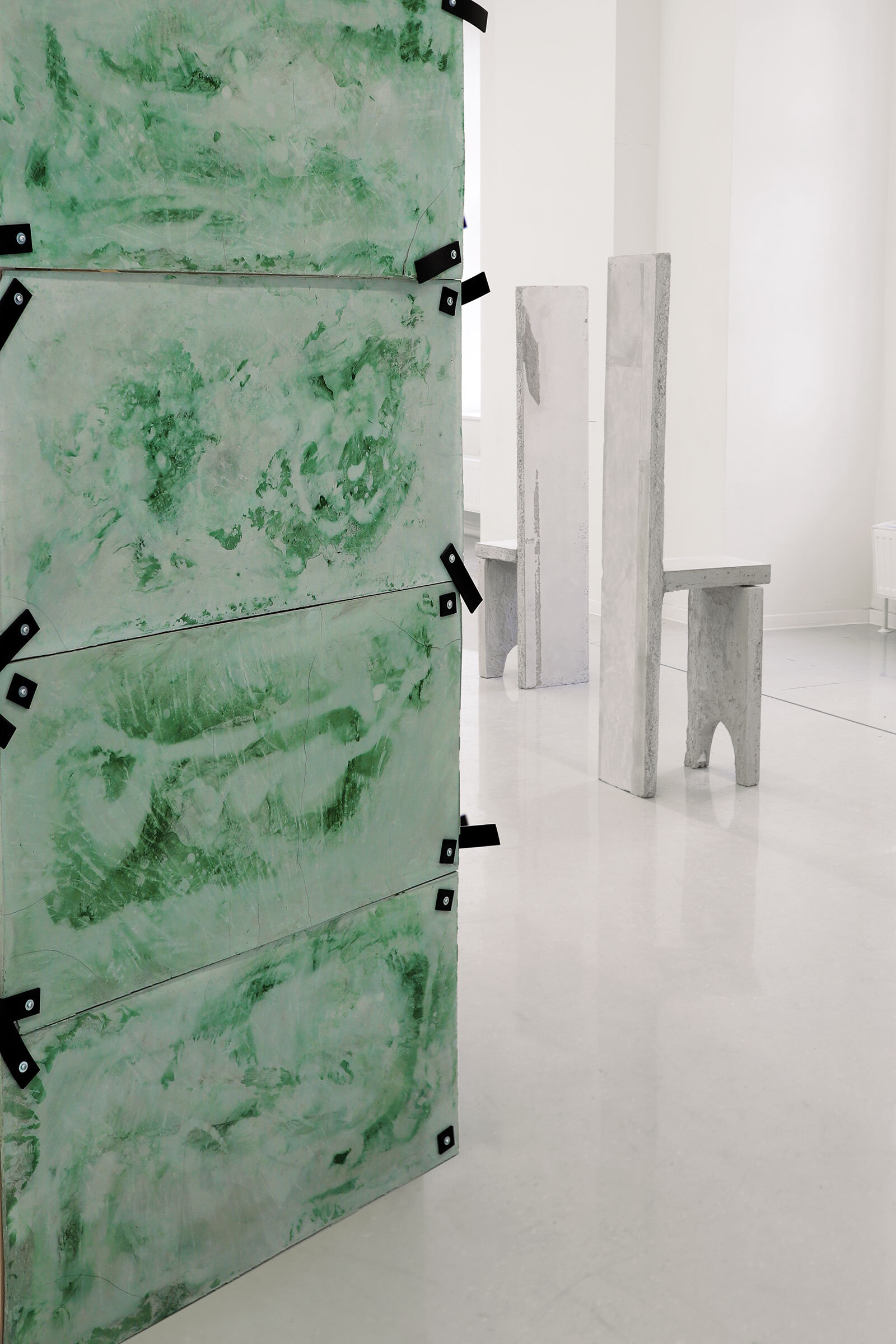
Green fake marble display, 2020
close-up with chair-like building in the background

Green fake marble display, 2020
102 x 102 x 202 cm
Installation: 16 plates on wood construction
cement, chromoxid pigment, fibreglas, rubber;
102 x 102 x 202 cm
Installation: 16 plates on wood construction
cement, chromoxid pigment, fibreglas, rubber;

Chair with saddlebag, 2020
112 x 52 x 64
concrete, polystyrene hard foam, titanoxid pigment, rubber
112 x 52 x 64
concrete, polystyrene hard foam, titanoxid pigment, rubber

Tower, 2020
140 x 50 x 40 cm
concrete, polystyrene hard foam, titanoxid pigment, rubber
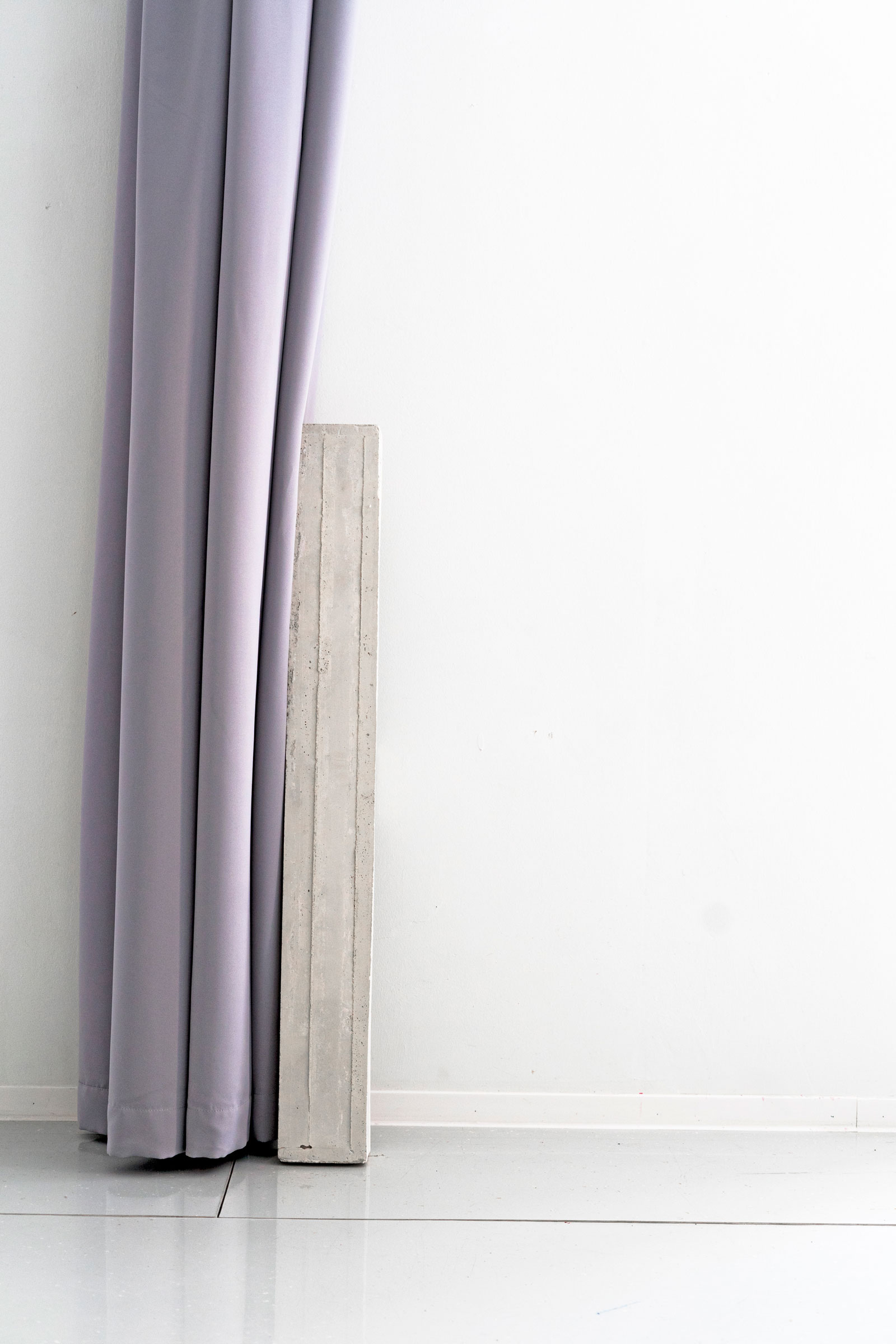
Curtainholder, 2020
145 x 12 x 23 cm
concrete, polystyrene hard foam, titanoxid pigment, textile

Exhibitionview

Chair-like building brutalism, 2020
44 x 28 x 57 cm
concrete, polystyrene hard foam, titanoxid pigment

July 2020
The exhibition “It´s better to get off quickly”
The exhibition “It‘s better to get off quickly” is designed as a multi-part sculpture series. The choice of materials for this is clearly and minimalistically defined: concrete, rubber, wood, occasionally metal.
Polystyrene hard foam panels serve to stabilize and reinforce the concrete sculptures. This makes the sculptures much lighter than solid castings - therefore easier to transport and process. The applied layer of concrete is often only one centimeter. However, this means that the apparently massive objects are extremely fragile and easy to destroy.
Dealing with the complexity of human experience and perception is of central importance to my work, for example questions about desire, meaningfulness and alienation. I see the world as a „built and constructed world“ and my sculptures are an expression of what has developed and consolidated in the course of modernization. It is always about questions of stabilization, security and their comparison with the prevailing power relations. Our material-determined world gives us an ostensibly apparent stability and security in which we move every day - physically and mentally. I understand my sculptures as a record of a constructed, material-based world. My work process is an exploration of the formal potential of artifacts or architectural elements in terms of nuanced psychological states and aesthetic experiences.
Each of the objects is based on a certain psychology based on purpose and usability. The objects find their reflexive basis within the complex entanglements of functionality, representation and collective images.
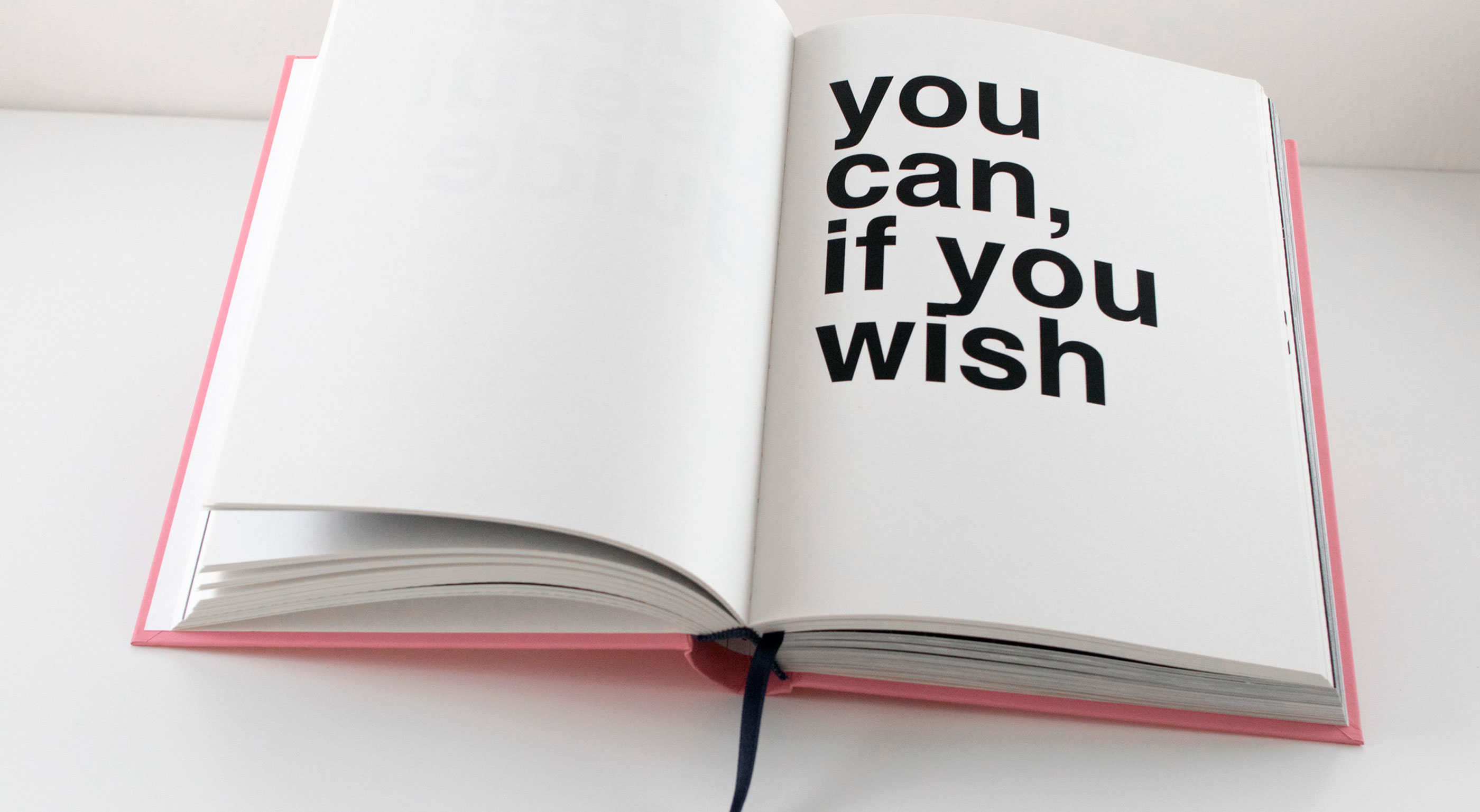
The conceptual topic of destabilization is continued in a written elaboration in the form of a book. A publication of 450 pages is to be understood as a text-based work with concise and striking short texts. The graphic implementation in the layout is based on the graphics of warning notices and other safety rhetoric. The content of the text fragments detached from the context is found between self-optimization, finding meaning, frustration, insignificance and irony. Text scraps and chopped off platitudes that move between affirmation and negation.
︎︎︎Publication accompanying the exhibition
The second part of the book is a photo documentation of my two-year work process with concrete. The photographs do not only include finished works, but primarily images from the workshops, from the studio, process representations, material photographs and inventories of an experimental phase.
The second part of the book is a photo documentation of my two-year work process with concrete. The photographs do not only include finished works, but primarily images from the workshops, from the studio, process representations, material photographs and inventories of an experimental phase.